While most people dream of doing bucket list treks like Everest Base Camp or the Annapurna Circuit, the time commitment for these is usually two weeks at a minimum. For those of us who can’t commit to two weeks in the mountains, or maybe don’t want to, there are tons of short treks in Nepal that are worth doing. These are great options for people on a time crunch, those with a smaller budget, and even those who don’t want to deal with altitude sickness. I also think that most of these can be done by outdoorsy families as long as their kids are up to the challenge. Here are the top picks for short treks in Nepal…
Kulekhani Lake Trek
Duration: 3 days
Highest Altitude: 2,540 m (8,333 ft)
Difficulty Level: Easy
Required Permits: None required
Is a Guide Required: No
The Kulekhani Lake Trek is one of the easiest short treks in Nepal. You can start the trek on the outskirts of Kathmandu at the famous Chandragiri Cable Car. From there you hike mostly downhill to Chitlang, a small rustic village in the hills. Here you can admire village life and see the first goat cheese factory in the country. You can also try the areas ground apple wine. The following morning, there’s a 2-3 hour hike to Markhu where you get to stay by the beautiful Kulekhani Reservoir. Rent a boat, go for a swim, hike to a waterfall, or just relax and read a book. The next morning it’s back to Kathmandu by jeep.
This trek is perfect for those who want a nice easy trek that goes mostly downhill. It’s perfect for families, groups of friends, and those with no trekking experience. No guide is required, and those who have an offline map downloaded (like maps.me) can easily navigate the paths.
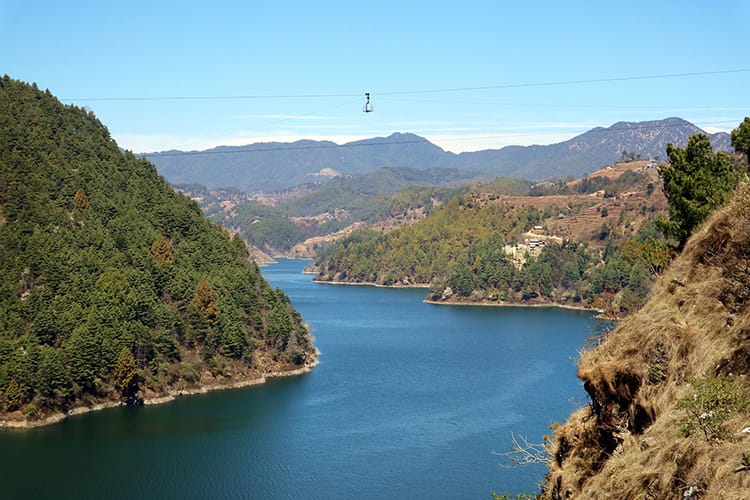
Dhampus & Sarangkot Trek
Duration: 3 days
Highest Altitude: 1,650 m (5,413 ft)
Difficulty Level: Easy/Moderate
Required Permits: None required
Is a Guide Required: No
The Dhampus Trek is arguably the easiest trek in the Annapurna Region. It’s also one of the cheapest. Dhampus has become a popular destination in recent years due to its beautiful views. Best of all, no permit is required to hike here. It sits conveniently on the outskirts of the Annapurna Conservation Area.
From Dhampus, you hike to Sarangkot which is a small town located just above Pokhara. Many people hike to Sarangkot for the sunrise, but you’ll get to wake up to it from the window of your hotel. This is a great trek for those who prefer to travel in comfort. The hotels in this area are much nicer than other trekking routes. If you are on a budget, you’re still able to find cheap accommodations here as well.

Mardi Himal Trek
Recommended by Campbell & Alya of Stingy Nomads
Duration: 4 days
Highest Altitude: 4,500 m Mardi Himal Base Camp (14,763 ft)
Difficulty Level: Difficult
Required Permits: TIMS (2,000 rupees or $20 USD) and ACAP (3,000 rupees or $30 USD) are required
Is a Guide Required: No
The Mardi Himal Trek is one of the less popular trekking routes in the Annapurna region. This short trek offers breathtaking views of the mountains including some of Nepal’s iconic peaks like Machapuchare, Annapurna II, Annapurna III, and Annapurna IV. The trek is physically challenging, the total elevation gain is 3274m, so you need to proper acclimatize along the way. The trail is marked with white and red stripes all the way making it easy to navigate.
Hikers stay in traditional Nepalese tea houses but unlike the other routes, rooms here are bigger usually for four or six people. At lower elevations, there are designated areas for camping where you can pitch your own tent or rent one. The facilities of tea houses are quite basic compared to the other treks. Not all of them have electricity or running water, toilets are always outside and Wi-Fi is not as common as on the Poon Hill trek or the Annapurna Circuit. The route can be easily accessed by bus from Pokhara though after heavy rains the road conditions are usually quite bad and it can take 3 or 4 hours to drive a 100km.
The Mardi Himal is a great trek for those who want to escape the crowds and explore lesser-known parts of the Annapurna Sanctuary.
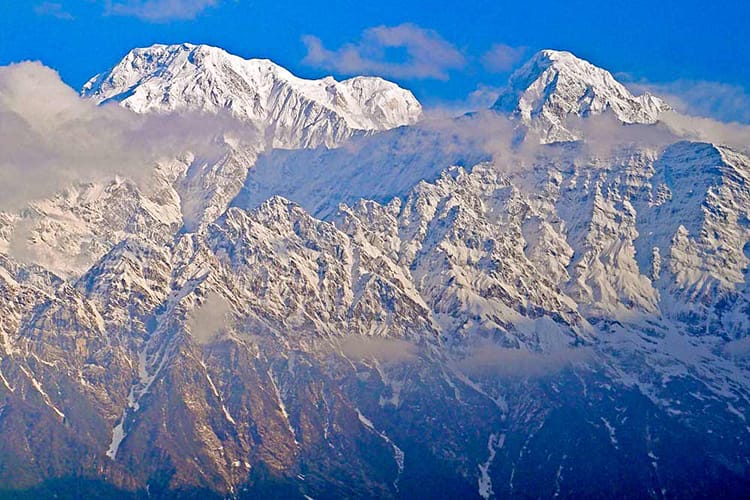
Ghorepani Poon Hill Trek
Recommended by Hanna Thomas of Solar Powered Blonde
Duration: 5 days
Highest Altitude: 3,210 m (10,531 ft)
Difficulty Level: Moderate
Required Permits: TIMS (2,000 rupees or $20 USD) and ACAP (3,000 rupees or $30 USD) are required
Is a Guide Required: No
Poon Hill is a perfect short trek for those who want to experience trekking in Nepal without having to spend two weeks doing so! This five-day trek involves walking 3 days up hill and two days down. The trek is not too physically hard, as there aren’t many steep parts, but you do have to be able to walk up a serious amount of steps. You also mustn’t get disheartened by the Nepalese who will be running past you making it look very easy!
It is a moderate trek. The first two days you walk for most of the daylight hours and arrive at a guesthouse for dinner and to sleep. Three Sisters is a great company to go with, which is a company run by women. It’s highly recommended to go with them if you are a solo female traveler.
On the third night, you stay in a guesthouse right at the base of the last part of the hike. Be prepared to wear some extra layers here as it will already be quite chilly. Then after a very early start, you get to watch the sunrise over the mountains. The maximum elevation is 3,210m. The views from up there are breath taking! It’s recommended to take lots of snacks, as they get more and more expensive the higher you go in altitude. The main food for lunch is lentils and curry (dal baht). There was one place selling pizza, but it didn’t look good!
Mohare Danda (Eco Lodge Community Trek)
Recommended by Inma Gregorio of A World to Travel
“Along with some stunning treks in India, Nepal’s Mohare Danda (aka. Eco lodge community Trek) occupies a very special place in my heart.”
Duration: 5 to 6 days
Highest Altitude: 3,300 m (10,827 ft)
Difficulty Level: Moderate
Required Permits: None required depending on the route you may need a TIMS or ACAP
Is a Guide Required: No
This trek, which lasts between 5 and 6 days (depending on your fitness level and the pace at which you want to do it) and reaches an altitude of 3300m (so it is very difficult to have problems with the acute altitude syndrome) is quite new, having been recently developed. Therefore, it is not essential to do it with a guide, although it is almost always a good idea to have someone’s help.
If weather and visibility conditions are nice, it is quite easy to follow the path. Still, it is recommended to discuss your route every day before departure with the locals at the place where you are staying. Speaking of which, as every other hiking trail in Nepal, accommodation is very simple and you’ll most likely have to share a room with someone else. Hot showers are rare (a hot water bucket is more common, but it takes time) and food is mostly vegetarian. Especially, during the highest part of the trek.
If you want to see mountains, it’s recommended that you get up early and go up to an elevated area to try your luck before the clouds cover the peaks. Incredible views of the Annapurnas, Dhaulagiri, and the mighty and sacred Fishtail Mountain await.
Sikles Trek
Duration: 5 to 6 days
Highest Altitude: 2,000 m (6,561 ft)
Difficulty Level: Moderate
Required Permits: TIMS (2,000 rupees or $20 USD) and ACAP (3,000 rupees or $30 USD) are required
Is a Guide Required: No
The Sikles Trek is still considered a new route in the Annapurna Conservation Area. The 5-6 day trek goes through beautiful hillsides, farmlands, and villages with the Annapurna’s as the backdrop. This trekking route highlights Gurung culture which is the major ethnic groups in the area. This is a wonderful way to see their culture especially if you go around Tihar, a major festival in Nepal or around Gurung New Year.
The best part of this route is the tiny village of Tangting. It’s a peaceful place that few tourists ever visit. It sits on a hillside facing the mountains. The little village is full of charm with its stone pathways, gardens, and smiling locals. The village has been referred to as “Pure Nepal.”
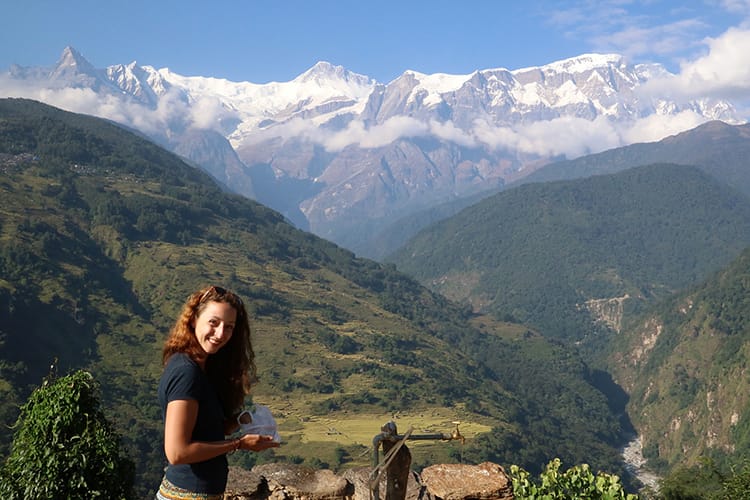
Lower Mustang Trek
Duration: 6 days
Highest Altitude: 3,710 m (12,171 ft)
Difficulty Level: Moderate
Required Permits: TIMS (2,000 rupees or $20 USD) and ACAP (3,000 rupees or $30 USD) are required
Is a Guide Required: No
Most people skip over Lower Mustang on the way back from the Annapurna Circuit by taking a jeep. It’s one of the most charming and beautiful parts of the Annapurna Conservation Area. The area has a bit of a desert feel and there are major wind tunnels, so it’s best to be prepared with a face mask and sunglasses. Lower Mustang features the beautiful towns of Marpha and Kagbeni and is famous for its apples. Try as many forms of apple as you can such as the apple wine, dried apple, apple pie and more!
Muktinath is a pilgrimage site for both Buddhists and Hindus. In the temple, there are holy water springs. Locals believe that taking a dip under the 108 water taps will wash away their sins or send them to heaven. It is the last dying wish of many to visit this temple. Those who are elderly or sick may be seen riding horses or carried up to the temple.
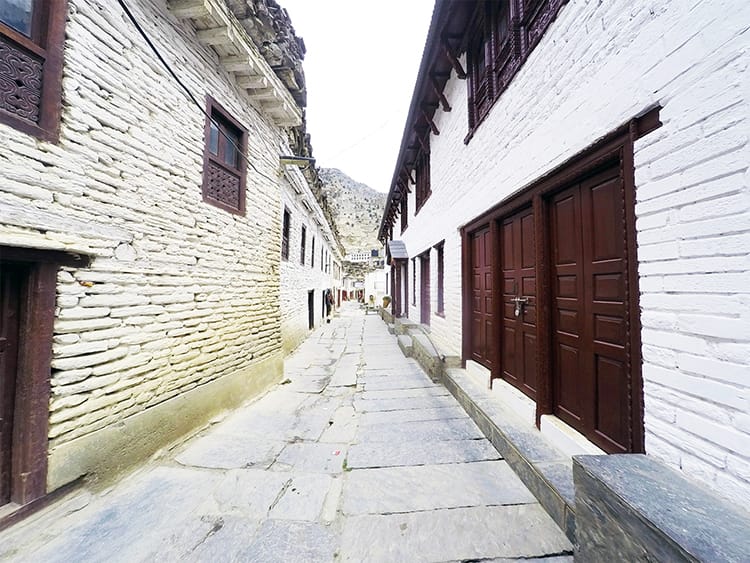
Everest View Trek
Recommended by Meg Atteberry of Fox in the Forest
Duration: 7 days
Highest Altitude: 3,440 m (11,287 ft)
Difficulty Level: Moderate/Difficult
Required Permits: Sagarmatha National Park Permit 3,390 rupees ($34 USD) and TIMS 2,000 rupees ($20 USD) are required.
Is a Guide Required: No, but it’s recommended
If you don’t have the time (or desire) to trek all the way to Everest Base Camp, you can still enjoy jaw-dropping views of the world’s tallest peak. The Everest View trek, usually taking around 7 days, offers amazing views of the Himalaya. The trek starts off with a scenic (and thrilling) flight into the Lukla airport – touted as the most dangerous airport in the world thanks to its precarious position on the side of a mountain.
Take your time properly acclimatizing as you stay in wonderful, locally-owned teahouses along the traditional trail to Everest Base Camp. Make your way to Namche Bazaar (11,287’) then take a day to acclimatize to the higher altitude. This is your maximum elevation for your trek. Just outside of Namche Bazaar you’ll have your first opportunity to see the tallest mountain in the world. Enjoy the beautiful mountain views as you make your way to Manjo. From there, head back to Lukla to return home.
As always, you should respect local culture and customs and hire a local guide. You’re not only respecting the local Nepalese tradition, but you’re helping the local economy more than if you embarked on this journey by yourself. Not to mention, it’s often times cheaper to go with a guide, since prices are greatly inflated for guideless trekkers.
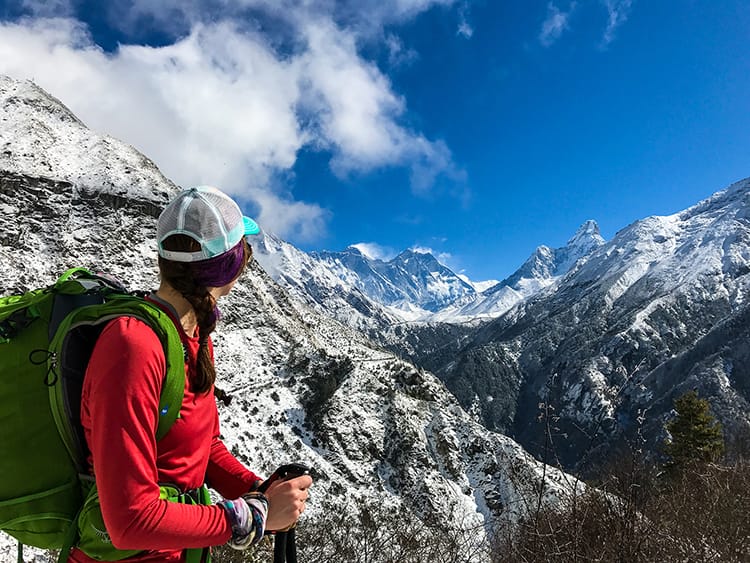
Kathmandu Valley Trek
Duration: 7 days
Highest Altitude: 2,175 m (7,135 ft)
Difficulty Level: Easy/Moderate
Required Permits: Nagarkot ($4 USD) and Namo Buddha ($1 USD). You purchase these when you arrive to the village kind of like an entry fee.
Is a Guide Required: No
The Kathmandu Valley Trek can be done in as little as 3 days or as many as 10 depending on the route you take. The seven-day route is ideal since you get to see so much. The trek starts in Bhaktapur and goes up to the oldest known standing temple in Nepal called Changu Narayan. From here you head to Nagarkot which is famous for its sunrises. The following day goes through the ancient city of Dhulikhel and then up to Namo Buddha Monastery where you can listen to novice monks chant at breakfast. The last leg goes to Balthali, a small village that’s off the beaten path. The trek ends in the historical city of Panauti.
This trek shows you the best of ancient cities, village life, farm lands, views of the Himalaya, and a Buddhist monastery. Some of the days are long, but you’re never too far from a road, so it’s great for those who are unsure of their fitness level. This is also a great trek for those who like a bit of luxury. Several of the stops along the way have hotels that range from budget friendly to the most luxurious hotels in the entire country.
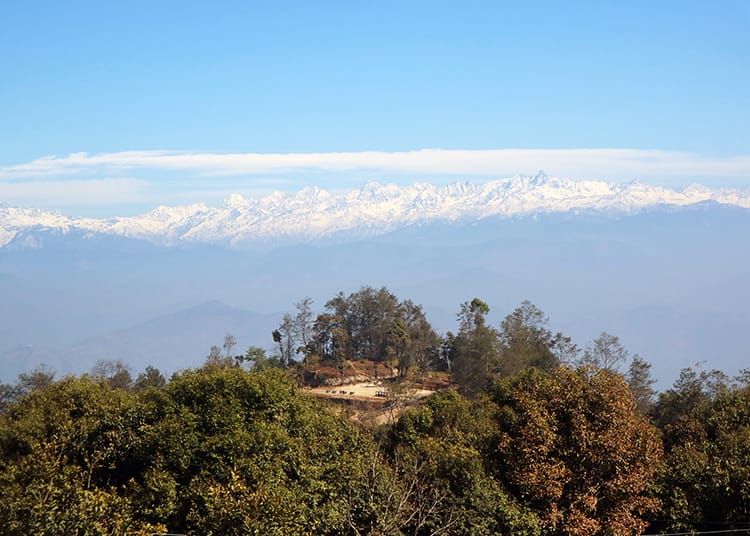
Tsho Rolpa Trek
Duration: 7 days
Highest Altitude: 4,558 m (14,954 ft)
Difficulty Level: Difficult
Required Permits: GCAP (3,000 rupees or $30 USD) is required
Is a Guide Required: No
The Tsho Rolpa Trek is one of the least visited short treks in Nepal. With less than 500 tourists visiting the area each season, it’s considered the “Virgin Trail.” The trek is located in the Gaurishankar Conservation Area and is famous for being in the Rolwaling Valley. This valley has some very specific rules including a no kill rule. No animals are allowed to be harmed in the area which has created an unofficial animal sanctuary for yaks, cows, sheep, and more. It’s one of the few places in the world where you can see yaks roaming free. If you’re lucky enough to go in May, you’ll even see the baby yaks just after they’re born.
While no guide is required for this trek, it is always recommended to have one with you. The path is easy to navigate, but it’s extremely steep. The first 5 days of the trek are mostly uphill, while the last two days are used to get back to the starting point of Singati Bazaar. Overall, this trek is perfect for those who want a break from civilization and want to experience nature at its finest.
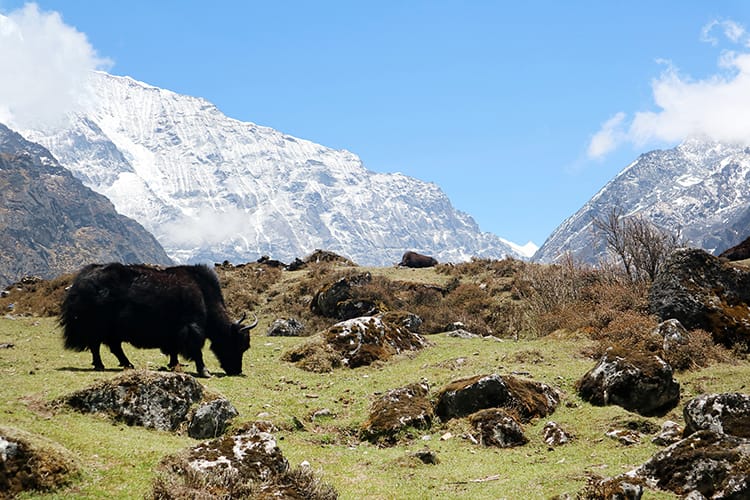
Tilicho Lake Trek
Duration: 7 to 8 days
Highest Altitude: 4,919 m (16,138 ft)
Difficulty Level: Difficult
Required Permits: TIMS (2,000 rupees or $20 USD) and ACAP (3,000 rupees or $30 USD) are required
Is a Guide Required: No, but it’s highly recommended
The Tilicho Lake Trek can take as little as 7 days or as many as 15 depending on where you start from. Those in a bit of a rush can take a jeep to the village of Chame and start their adventure from there. You will also need to take a jeep back down which adds to the overall cost of this trek. That being said, it’s an incredible choice for a short trek in Nepal for those who want to see the highest, biggest lake in the world.
This trek is not for the faint at heart. It’s famous for its landslide zones which is why it’s important to take a guide if you’re not an avid trekker. It’s also extremely important to leave early each morning to avoid the afternoon winds that often cause rocks to fall. This route offers spectacular views and puts you right into the heart of the Himalaya mountains.
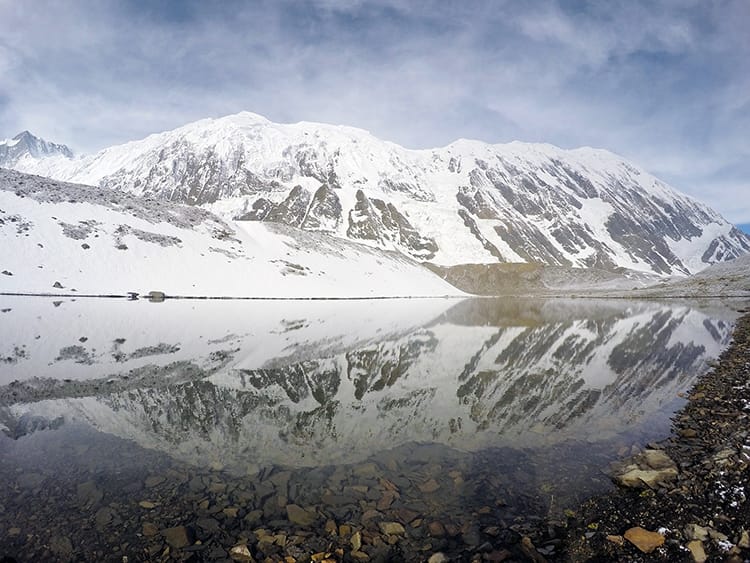
You might also like…
This post on short treks in Nepal was written by Michelle Della Giovanna with contribution from other bloggers who are mentioned within the article. It originally appeared on www.fulltimeexplorer.com
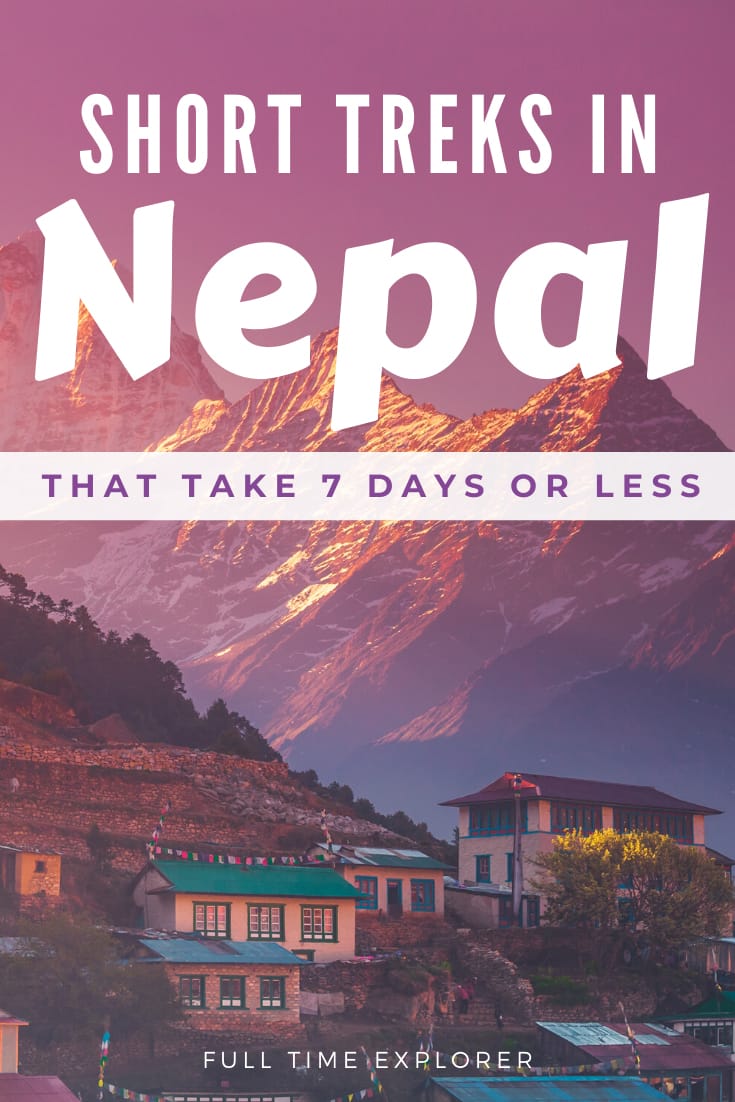
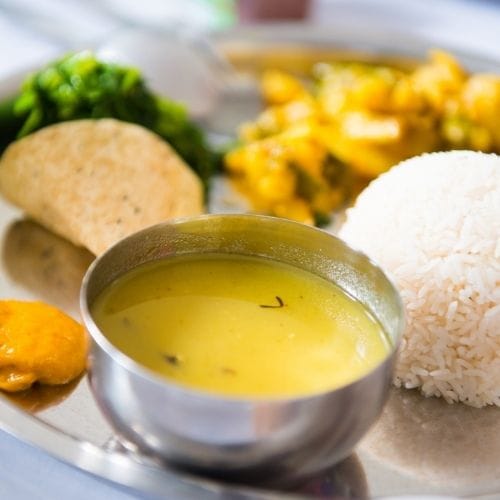
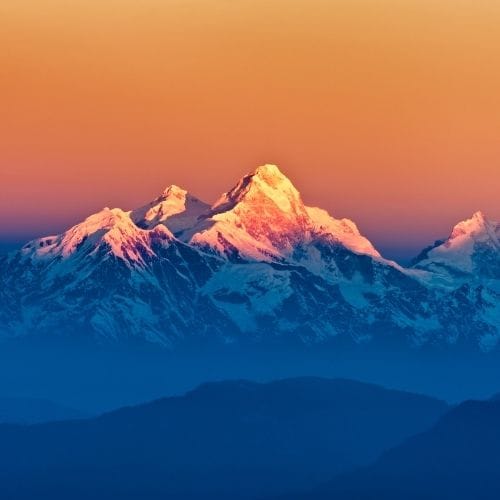
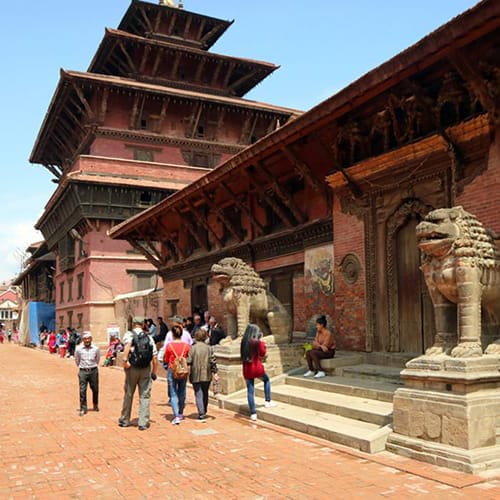
Wonderful article, Michelle! I’ve done Three Passes + EBC two times, doing Annapurna circuit now and it looks like there are limitless opportunities in Nepal for future trekkings. I am particularly interested in Tsho Rolpa Trek and Kathmandu Valley trek, hope to do them in near future.
Did you hear about Langtang trek? Have you done that? I heard it is also 6-7 days length.
I have yet to do three passes but I hear it’s great. I’ve done the Gokyo/EBC trek but we didn’t go over the pass because of unstable conditions. I’m hoping to do Langtang either in the spring or fall next year. There’s so many treks on my to do list haha. Tsho Rolpa is cool because it’s so well maintained and has very few tourists and KTM Valley is beautiful and full of amazing cultural experience.